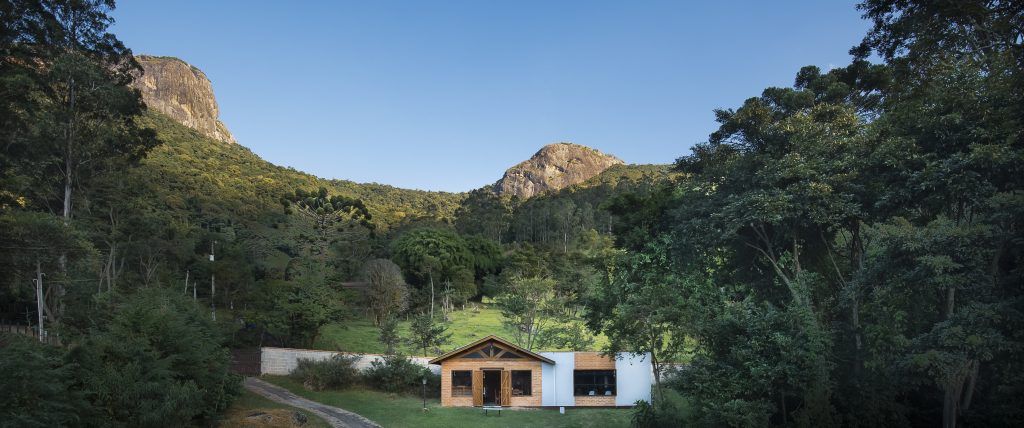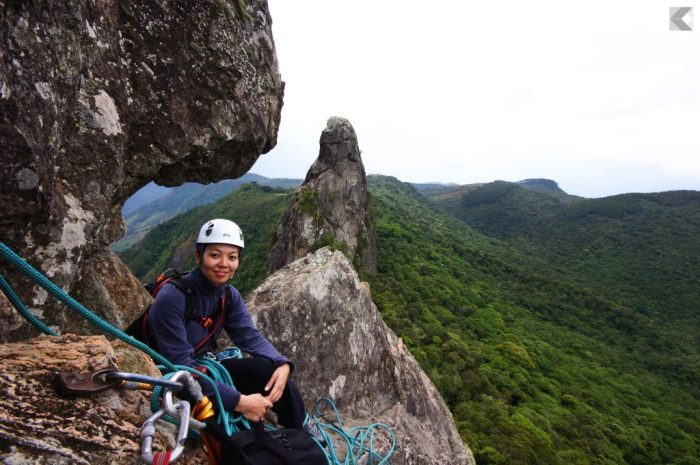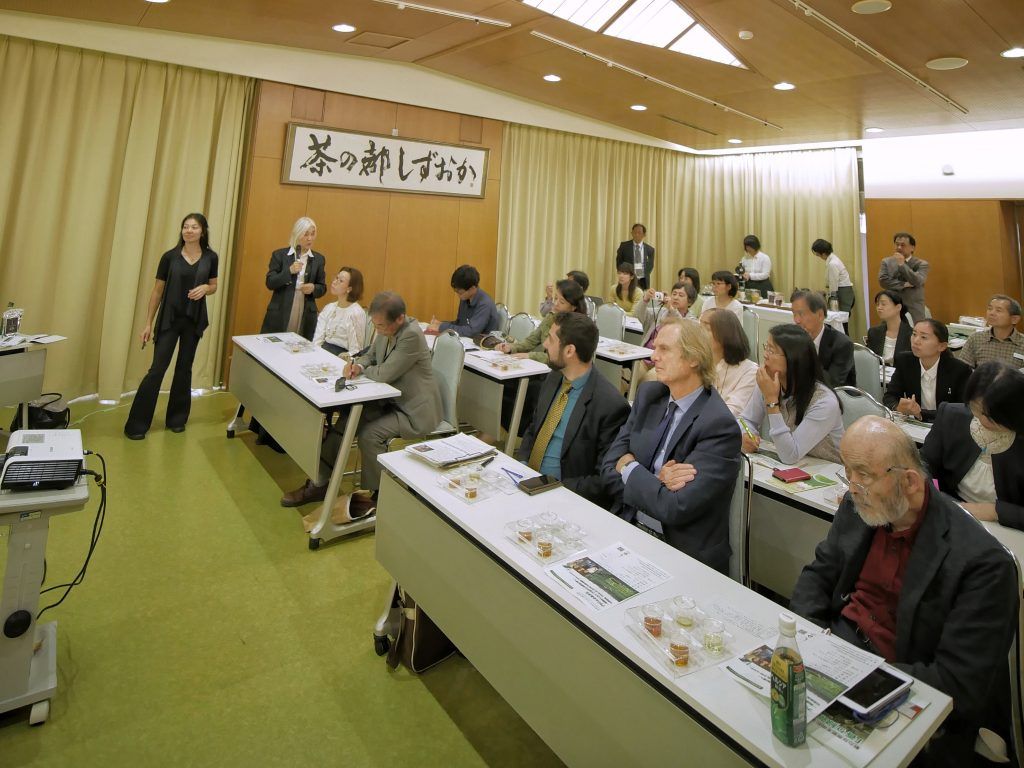Yuri Hayashi, the founder, has studied the culture of specialty teas for almost 20 years and, from her observations, created a formal school on the subject
In Brazil, this is how things work: one takes a week-long course on a certain subject and thinks they already are experts. And, if they are skilled in the social networks, then they will begin to market their meager “knowledge” to the unsuspecting users who, in turn, will sell it to others. So it is with wine, coffee, chocolate, tea and so forth.
Against this everlasting amateurism, sansei Yuri Hayashi, after studying the theme for more than 20 years, created a formal tea school, Embahú. Tea has always been present in her life and, admittedly, her sweetest memories have always mixed between the beverage and affection. “I remember that we would drink the tea we had at home, which was very simple and not special at all throughout the day. As it was not common to find Japanese tea in the country, my family found a substitute: the mate herb,” says Yuri.

“That hot beverage warmed my soul, and it was present at all times,” she says. Her father, who for many years was a video editor for TV Cultura, made a point of investing in Yuri and her brother’s studies. “My father wanted us to study what was most advanced, so my brother and I went to study computing. I graduated in digital design, went deep in Philosophy of Image, worked in agencies, but I got a little tired. I was also very fond of education, but I did not know what to do for a while. Tea, at that time, as well as mountaineering, were just hobbies,” she recalls.
It was then that Yuri’s husband, Cláudio Brisighello, co-creator of the Embahú Tea School, began to encourage her to stop treating tea only as a hobby. Yuri decided to create a blog on the topic, at a time when it was very difficult to obtain information on the subject. She became known in the small community of the beverage lovers in the country. “I wanted to know more and more, and as I looked for courses, I realized they didn’t exist in Brazil. I found an international one that cost the equivalent to a brand-new car. I didn’t have that availability and, then, I became self-taught,” she says.
She moved from Botafogo, in Rio, to São Bento do Sapucaí, in the interior of São Paulo, in 2010, looking to be closer to nature. “I wanted to continue climbing and I also wanted to start a small field with a very specific purpose: sensory research. For me, tea has always represented a connection with nature ”, she says.
She started her observations about camellia sinensis on the spot, on the foot, and also started to study about the management of the tea culture, and to research more and more about the sensory part. “My tea field is just for my study, so I can understand the plant in all its nuances,” she explains. She wanted to share all this knowledge acquired, and then, in 2013, the Embahú Tea School emerged, the first teaching institution on specialty teas in Brazil, with a dedicated physical space and now with a complementary Distance Education system.
The culture of tea
Yuri says that she and her husband built, on their property, a separate kitchen with a wood oven to be able to taste the teas with their students. “Here we have a space for experimentation within the property, created so that we can teach from how to prepare a tea to its use as an ingredient in cooking,” she says.

In 2013, the Tea School formally started, with the first gourmet tea tasting workshop (since the specialty designation was not yet used). And, from there to here, it has come up with several modules to meet the needs and interests of its students. Today, a universe of 800 students have already passed by the Tea School, having taken their courses in the face-to-face format.
Diverse audience
“My first students were mostly ladies who wished to have their afternoon teas, or who came after botanical infusions. But I already taught about specialty teas. It was important to help these people understand a little more about a universe as wide as that of tea. One would arrive at the school with a purpose and, as the courses started, they did not imagine the sophistication that the world of tea offers. I think it is part of my mission to teach about specialty teas, their different types, countries of origin etc., as well as to help expand the culture of specialty teas in Brazil,” she explains.
Over time, Yuri noticed a gradual change in the profile of people interested in learning a little more about teas. “In the beginning, it was an audience that was 100% lay and wanted to eat something that matched it. Over time, I started to receive people from a younger age group, who were interested in a change in their eating habits. In the following wave, people who were closer to the culture of yoga, alternative medicine, meditation centers, “traditional Chinese medicine, vegetarians and vegans” started to show up. Then, interest reached small entrepreneurs, who were looking at the growing tea market in general. Now, I realize that the people coming are those who love tea and want to live on it,” she states.

“I started to create the course modules as per the needs of the students themselves. The teas introduction was the first one. People came here without even knowing how to prepare teas, which is an actual science. Then, I realized that they also had a lot of difficulty in the sensory part, so I created another specific module in this sense,” she explains.
Indeed, Brazilians are not encouraged to exercise their sensory perception, unlike other peoples. “Here, nobody will teach you about tastes and how to identify the different flavors. To fill this gap, I created the sensory module on teas and then the use of teas as an ingredient in cooking,” she details.
In 2019, Yuri realized that her face-to-face course was getting too long and that she had already created enough content to offer a complete training. “Thus, I started the transition. We installed a Distance Learning system at wwwescoladecha.com.br and, before the students came here to attend the face-to-face classes, they would take the classes online. Here, we just handle the practical part,” she says.
“In 2020, when the pandemic arose, I had already adapted the tea specialist training course for the online universe. It has three levels: the first is entirely online, and covers such topics as types of specialty teas. When the pandemic broke out, we were already doing level 1 online. Levels 2 and 3 are hybrid and, for them to be taught again, the School is waiting for the covid to cool down. “We have scheduled the next levels 2 and 3 courses for June and we hope that by then, we will be able to receive people here in complete safety,” she affirms. For more details about the courses, visit wwwescoladecha.com.br.
Visit to Japan
Before the onset of the pandemic, last year, Yuri was invited to join a Study Program in Shizuoka, the capital of tea in Japan, and four nearby producing regions such as Honyama and Mount Fuji. The specialist says that she was surrounded by very experienced Japanese professionals, and that she was very well received. “I made a presentation followed by tasting some Brazilian specialty teas and also the mate herb. Although very different from the tea produced in Japan, originating from camellia sinenses, they loved it,” she says enthusiastically. According to her, the Japanese specialists appreciated the bitterness of the asamic camellia, grown in Brazil. “Unlike the Western, they appreciate the bitterness in food and drink,” she explains.
Before the trip, family and friends prepared her to be received with indifference or even a certain prejudice. After all, many Japanese consider patriots who immigrated from Japan in the late 19th and early 20th centuries as deserters. But what happened there made her so sensitive that she cannot talk about it without being moved. “At the end of my presentation, many professionals came to talk to me, even showing some guilt. They did not know what had happened to those who, in reality, were forced to leave Japan thanks to an unprecedented economic crisis, to come and live in Brazil. “Many of them asked me what happened to these people and the reason why they were not welcomed again. They spoke to me with such affection and then I told them a little about many of the stories experienced by Japanese immigrants who lived in the region of Registro, in the countryside of the state of São Paulo, where there are several tea plantations.”

Yuri, who has many partners in Registro – considered the tea capital of Brazil – tells a little about what happened to the Japanese descendants who lived in the region.
The Brazilian specialty tea
“At the beginning of the 20th century, in 1908, the first 781 Japanese immigrants arrived in Brazil. Many brought tea seedlings, and an important part of these people went to work in the fields. Several of them went to Registro to plant tea, bringing all their knowledge in the cultivation of camellia and in the processing of leaves. But Brazil was a coffee monoculture and, over the years, tea was no longer planted so as to make room for coffee, which was very important for the result of the Brazilian Trade Balance. All tea factories closed in Registro, with the exception of Amaya Chás.
The fact that they did not abandon their field, made other small producers also did not abandon their crops. They worked in a cooperative system. Some only took care of the plantation, others reaped and the others looked after the processing, that is, they complemented each other.
The specialty teas that are being produced today, such as the one from Obaatian, (read about it here) for example, had been always there. Many producers simply pulled their camellia plantations off the land. In that sense, Amaya is a symbol of resistance.
The Yamamaru farm, a tea producing site in an agroforestry system, is also in operation. All of these locations can be visited through the Tea Route in Registro, created by the Embahú Tea School and organized by Infusorina, www.infusorina.com.br.
Yamamotoyama
Yamamotoyama, for example, is a family green tea business of Japanese origin with over 300 years of tradition, which has been present in Brazil since 1970. The specialty tea produced in the city of Tapiraí, in the countryside of São Paulo, is almost entirely exported to supply the American market.
When she was asked whether there is a future to the Brazilian specialty tea, Yuri is emphatic: “I really believe that, one day, we will have a large production of specialty Brazilian teas of the highest quality. I like to compare Brazil to Sri-Lanka, which was once a major coffee producer, as well as Brazil. The country had severe problems in its coffee culture due to a pest and started to plant specialty teas that, today, are very appreciated all over the world. To reach this stage, companies must evolve a lot in the post-harvest aspect, in the new processing techniques, to be able to please the palate of the Brazilians who will already be more improved, as well as those who appreciate specialty teas from the foreign market. It is a long-term bet, but I am sure we can achieve it,” she concludes.
We here, at Grão Especial, are betting on it! Who knows if we won’t do it with the help of our Japanese brothers in another migratory flow to Brazil?
Photos: Claudio Brisighello



